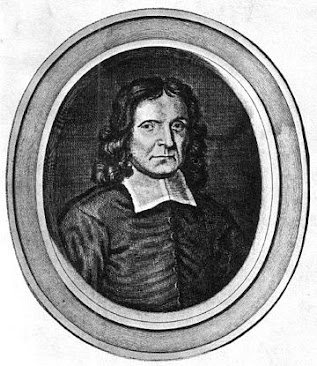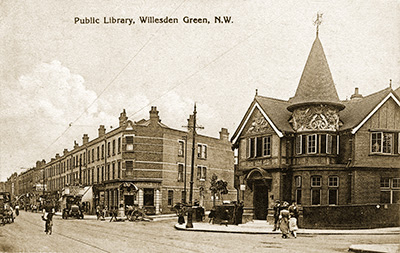I love historical fiction, and one of my most favourite authors of this genre is Philippa Gregory. The series of books which I enjoyed the most, from her body of work, was the Cousin's War series, which included a book called The White Queen. It told the story of the rise and fall of Edward Plantagenet, Duke of York, who became Edward IV of England, from the perspective of his wife, commoner Elizabeth Woodville. I loved how Gregory was able to imagine and relate the story of kingship and war through the eyes of this woman, who was considered by many as a beauty. Whilst Elizabeth was portrayed as the white queen (white due to the white rose of York), it was her mother Jacquetta who was vibrantly colourful by comparison. In fact Jacquetta was my favourite character in the books, and as a result one of my favourite women in history.


When I discovered that my grandfather's line connected me to the Plantagenet royal family, I eagerly traced my line back, and was so excited to discover that this colourful character from the Plantagenet era was actually my 18x great grandmother!
Jacquetta was the eldest daughter of Peter I of Luxembourg. Peter was the Count of Saint-Pol, the area around the city of St Pol in northern France, just south of Calais. He also inherited the counties of Brienne (in France) and Conversano (in Italy). Her mother was Margaret of Baux, and was descended from a powerful family in the Provence region of France.
 |
| The Luxembourg family believed they were descended from the water goddess Melusina. |
 |
| The county of St Pol can be seen near the centre of this map |
Whilst Jacquetta was known in the Gregory novels as a member of the York family, she began her life in the royal family of England, as a member of the Lancaster house. At the tender age of 17 Jacquetta married John of Lancaster, Duke of Bedford, on the 22nd April 1433 at Therouanne, in France, just north of Saint-Pol. The Duke was 43 years old, and the third son of the ruling king of England, Henry IV. The marriage was childless, and did not last long, coming to a natural end when the Duke died after 17 months of marriage, in Rouen, France. As the wife of a royal prince, Jacquetta was obliged to travel to England, to visit the king, who was by then Henry VI of England, the nephew of her deceased husband.
 |
| © The Trustees of the British Museum. Shared under a Creative Commons Attribution-NonCommercial-ShareAlike 4.0 International (CC BY-NC-SA 4.0) licence. Jaqueline de Luxembourg at left, full-length portrait, Anne de Jauche, Philippa de Lalaing and Bonne de Vieuville in outline, all in fifteenth-century costume; after the 'Recueil d'Arras'; from Rubens' Costume Book Pen and brown ink and greyish-brown wash. |
Henry VI sent Sir Richard Woodville (sometimes spelled Wydvill, Wydeville, or Wydevill) to France, to escort her to England safely. Richard Woodville was the son of another Richard Woodville, who was chamberlain to the late Duke of Bedford. Richard Woodville, the son, also worked for the Duke and so it was a natural fit to have him bring Jacquetta home to England. Richard Woodville was considered a commoner, and was far below Jacquetta's level of privilege and power, and yet on their return to England the two of them fell in love.
 |
| Poems and Romances (Shrewsbury book), illuminated by the MASTER OF JOHN TALBOT, Public domain, via Wikimedia Commons Henry VI, as depicted in the Shrewsbury Book. |
Jacquetta was quite the catch, with her dower lands reverting back to her, in her widowhood, but this was contingent on her not remarrying without the kings permission. Despite this she married Richard Woodville in secret without the approval of the king, which somewhat angered Henry VI. He refused to see them, and the happy couple were fined a whopping one thousand pounds. When the fine was paid, the king apparently forgave them, and Jacquetta was once again allowed to benefit from her dowery.
Jacquetta did well at court, and was a favourite of the king (Henry VI) and queen (Margaret of Anjou). As the aunt, by marriage, of the King, she was the most powerful woman in the court, with the exception of Queen Margaret, and it was using this influence that her new lowly born husband was created Baron Rivers in 1448.
 |
| Margaret of Anjou, wife of Henry VI, and related to Jacquetta by marriage. |
Jacquetta and Richard were a prolific couple and had many children together, including their eldest daughter Elizabeth Woodville, who was to become Queen Consort of England when she married Edward IV in 1464. Their second child, Lewis, died in childhood, in about 1438, and their third child and second daughter was Anne Woodville. Anne was my 17x great grandmother, who married William Bourchier. They had a further eleven children (14 in total); Anthony (c. 1440-1483), John Woodville (c. 1444-1469), Jacquetta (1445-1509), Lionel (c. 1446-1484), Eleanor (died c 1512), Margaret (died c 1500), Richard (1453-1491), Edward (c 1456-1488), Mary (c 1456-1481), and Catherine (c 1458-1497).
 |
| The marriage of Edward IV and Elizabeth Woodville. Illuminated miniature from Vol 6 of the Anciennes Chroniques d'Angleterre by Jean de Wavrin. |
All their children, who survived to adulthood, married well, thanks to Jacquetta and their eldest sister's powerful connections. And Richard Woodville rose to greater heights as his wife and daughter used their royal connections. Before their marriage Richard Woodville was a captain and a knight. He was created Baron Rivers in 1448, and then was appointed lieutenant of Calais in 1454-55. In 1459 Richard became the Warden of the Cinque Ports, defending Kent against invasion from the Yorkist earls.
 |
| The Garter Stall plate of Sir Richard Woodville, at St George's Chapel, Windsor, created in the 15th century. |
Later, after he switched sides, from Lancaster to York, and then after his daughter Elizabeth married Edward IV, Richard Woodville, Baron Rivers, became Earl Rivers. In 1466 he was appointed Lord Treasurer and then Constable of England, the following year. The Woodvilles were on their way up, in part due to Jacquetta's power and influence; rare in the very much male dominated world of medieval England.
Whilst the many Woodvilles were happy with their new found influence and prosperity, there were a few in the royal court, who were not. Edward's brothers George and Richard Plantagenet, and Richard Neville, Earl of Warwick (known as 'The Kingmaker' due to his excessive power, wealth and resulting influence) did not like that this family of commoners were doing so very well. Finally things came to a head in 1469, when Warwick truly fell out with Edward IV, and threw him from the throne. While 'King Warwick' held the kingdom he had Earl Rivers and his son John captured, and executed at Kenilworth on the 12th August.
 |
| An imagined portrait of Richard Neville., Earl of Warwick (aka The KingMaker) painted in the 16th century by an unknown artist. |
It was not long after this execution that Jacquetta was accused of witchcraft, by a Warwick 'hanger on'; Thomas Wake. Wake had a lead figurine which he claimed Jacquetta had created, with the purpose of using it for witchcraft and sorcery. The claim against Jacquetta fell apart when Warwick released Edward, and he climbed back on the throne. The King's Great Council cleared Jacquetta of all charges made against her on 21st January 1470.
Jacquetta died in 1472, at the age of 56, but the allegations of witchcraft were raised again, in 1484, when Richard III (Edward's younger brother) claimed that Jacquetta and Elizabeth her daughter, had used witchcraft to bewitch Edward, and secure the royal match. Richard did not offer any proof to back up these claims, and, as history tells, he died in 1485, losing the crown for the Plantagenet's forever more, and thus it passed on to the Tudor dynasty. (Richard's body famously was found in recent years, buried underneath what had become a Leicester city council car park.)
 |
| The earliest surviving portrait of Richard III, painted by Barthel in about 1520. It is owned by the Society of Antiquaries, in London. |
The Cousin's War (nowadays more commonly known as the War of the Roses) was brought to an end when Edward and Elizabeth's eldest daughter, Elizabeth of York, married prince Henry, the son of Henry Tudor (Henry VII). Elizabeth of York, and Henry VII had seven children together, most notably Henry VIII, their third child, and second son.
In the books by Philippa Gregory, Jacquetta is portrayed as an actual witch, who used her powers to protect her family and ensure they rose to the highest ranks of the land. She was not described as a Halloween witch, wearing the traditional black pointy hats and riding broomsticks, etc. Instead her character was closer to a white witch, not creating anything evil, but good, positive vibes that helped her family. This characterisation was undoubtedly a large part of what I found so colourful about Jacquetta's character in the novels. The real witchcraft accusations were quite clearly an effort, from those who disliked her and her family's power, to move her aside, and remove her from the ear of the king. Whilst the witchery of Jacquetta was clearly an illusion it doesn't diminish my draw to her. The fact that she married (Richard Woodville) for love, and against the wishes of the monarchy, and then despite that 'faux pas' managed to rise to such heights, bringing her husband and many children with her, retains her colourful character, without the need of witchcraft and sorcery. I remain bewitched by her!
****************************************
https://en.wikipedia.org/wiki/Peter_I,_Count_of_Saint-Pol
http://www.maproom.org/00/36/present.php?m=0056
https://en.wikipedia.org/wiki/County_of_Saint-Pol
https://en.wikipedia.org/wiki/Richard_Woodville,_1st_Earl_Rivers
https://en.wikipedia.org/wiki/Elizabeth_of_York
https://en.wikipedia.org/wiki/Henry_VII_of_England
https://en.wikipedia.org/wiki/Elizabeth_Woodville
https://en.wikipedia.org/wiki/Jacquetta_of_Luxembourg
https://en.wikipedia.org/wiki/Edward_IV












.djvu.jpg)




















,_by_Jean-Baptiste-Antoine_DeVerger.png)




